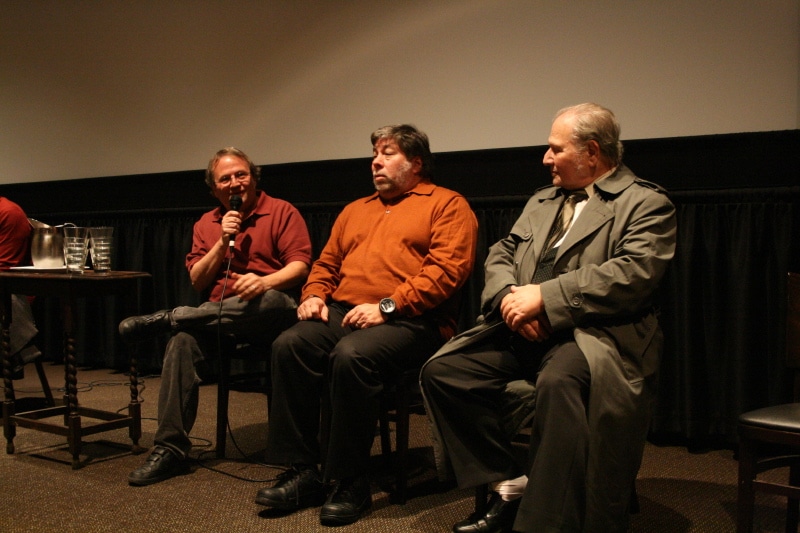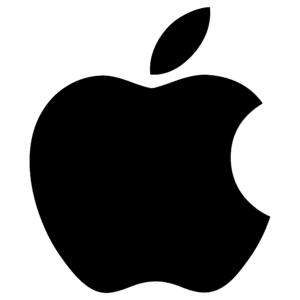25 Years of Macintosh: An interview with Andy Hertzfeld
Redaktion Macnotes, den 23. Januar 2009
While everybody thinks „Steve Jobs“ when asked about the Mac, few people know the engineers, programmers and designers behind the Macintosh project. Andy Hertzfeld, born ’53, was in the small, handchosen circle of employees who started to work on the Macintosh at the beginning of the 80’s. Hertzfeld played a major part in the development of the Mac OS. Since 2005, he has been working at Google. While the Mac turns 25, we had the chance to interview him about then and now.
Macnotes:
Andy, it’s been 25 years now since the Mac first saw the light of day. What does this anniversary mean to you?
Andy Hertzfeld:
It’s hard to believe that it’s already been 25 years. It’s amazing to me that not only has the Macintosh lasted for a quarter century, it’s currently in as good a shape as it ever has been and seems to have a great future in front of it.
We’re told the original Macintosh team will come together on Jan 24th to celebrate the Mac’s birthday. When was the last time you all saw each other? Who is putting this event together? Is it going to be something formal or more like a class reunion?
It’s a private party, and I don’t want to make it less private by discussing it.
At the Macworld screening of the Welcome to Macintosh documentary, there was this magical moment of Ron Wayne, Steve Wozniak and you appearing on-stage together to discuss the cult of Mac. It’s very rare that a product creates such a faithful following, but the Macintosh certainly did and it still lives on. What do you think made the Mac appeal to people’s emotions as much as it did?
I think it started with the passion that the original Mac team had for the work that they’re doing. We all loved computers and we were trying to make something as great as possible, and our enthusiasm was picked up and echoed back by the developers and customers. Also, truly breakthrough products are few and far between, so people get attached to something that truly improves their lives.
Going back to the 80ies now, who or what convinced you to work for Apple? Who hired you? Did you consider other options in the valley, like HP or Microsoft?
I bought an Apple II in January 1978 and immediately fell in love with it. It was the best product I had ever seen, and I became enraptured with its creative approach. It drew me to Apple like a moth to a flame.
Was there ever a moment during the development phase when you thought the product would never ship? It’s no secret that there where many technical challenges, but also power struggles between the Lisa, Apple II and Macintosh teams inside Apple. What was the atmosphere like at the time?
I have to refer you to my book, „Revolution in the Valley“ or the website it came from, folklore.org; there are lots of stories that describe the atmosphere; one in particular called „And Another Thing…“ illustrates some of the tensions between the Mac and Lisa teams.
There were times when I thought we might not ship, like when Bud (Editor’s note: Bud Tribble, manager of the original Mac software unit) left to go back to medical school, or when we found out pretty late that the disk drive we were planning to use (called Twiggy) didn’t really work right.
Speaking of technical challenges: As a software architect, you had to fight with hardware constraints, especially memory. Would you agree, though, that this helped focus on the essential things? After all, it’s the simplicity of the user interface that made the Mac truly stand out.
I think the limited memory helped to establish the standard user interface, which was one of the Mac’s greatest achievements – all the third party apps used a standard UI. Since memory was extremely limited, it helped persuade developers to use the standard UI which was built into ROM so it cost no memory vs a custom one that would eat up precious memory.
Back then, usability and simplicity were key features of the Mac. Nowadays computers have zillions of features, applications, uses. Is there a fundamental difference between then and now when it comes to keeping a GUI simple and intuitive?
The fundamental difference is that computers are at least tens of thousands of times more powerful now than they were twenty five years ago, so it’s possible to do a lot more. Given that, it’s a bit surprising that the UI paradigm that we established with the Mac still prevails. Users expect so much more out of their computers these days that it’s harder to keep things simple, but the Mac certainly does a better job at it than any of the alternatives.
We asked Susan Kare (editor’s note: designer of the original Mac icons and a highschool friend of Andy) to contribute to this story, but she said she would rather focus on the future, not the past. You, however, have tried to collect dozens of anectodes about the time at folklore.org. What’s your personal favorite?
You can focus on the future while you glance back at the past occasionally, in fact keeping the past in mind helps you to create a better future. It was fun for me to write the folklore stories, and I hope that people enjoy reading them. My personal favorites are most of the Burrell stories, like „Are you gonna do it?“ or „I Invented Burrell“, although I also like „Switcher“ and „The Times They Are A-Changing“, which is the story of the actual introduction.
There is the famous Jobsian quote „It’s better to be a pirate than to join the Navy“. Today, Apple has become the Navy in many ways, leading the market for digital music and smartphones and essentialy trying to control as many aspects of it as possible. Do you think that might hinder innovation? What do you think about „jailbreaking“ the iPhone to install custom software?
Apple seems to keep churning out terrific products like the iPhone, which seems full of the same spirit that’s in the Macintosh, so they must be doing something right. I don’t think Steve wants to be a pirate anymore, but he still wants to make insanely great products.
Jailbreaking iPhones is great for hobbyists, who are doing it to learn and have fun, but it’s bad for most customers who just wants something that works. They’ll always be the leading edge that pushes against the restrictions of the platform, and jailbreaking enables them to do whatever they want, but it’s way too complicated and dangerous for most users.
How does Apple compare to Google in terms of corporate culture?
There are striking similarities and differences. Both companies worship creativity and innovation, but at Apple it comes more from the top while at Google the individual engineers are more empowered. Both companies have a tendency toward secrecy, but Google has no secrets within the company while Apple is extremely compartmentalized that way.
One last question: Do you still use a Mac as your primary computer today? What are some of the apps you would not want to miss?
Yes, the Mac is still my primary computer, but I have to confess that I spend most of my time inside the web browser (ie, Safari). But I also use lots of apps, including iTunes, Photoshop, BBEdit, VLC, and Handbrake.

